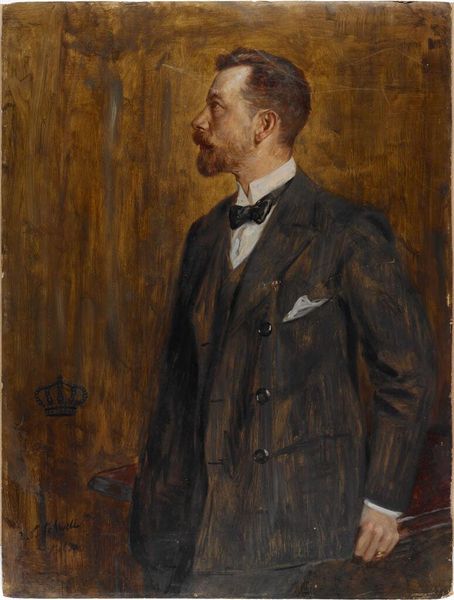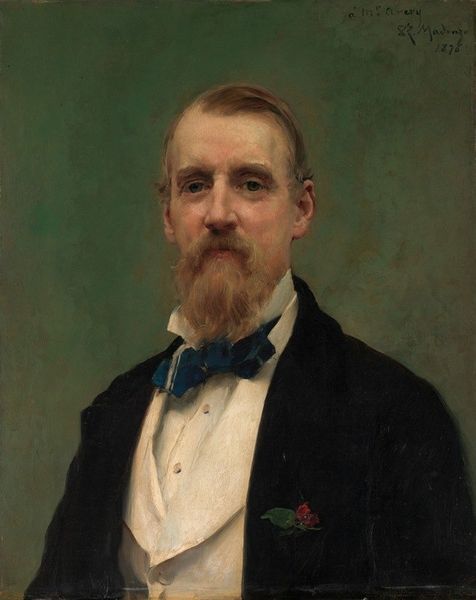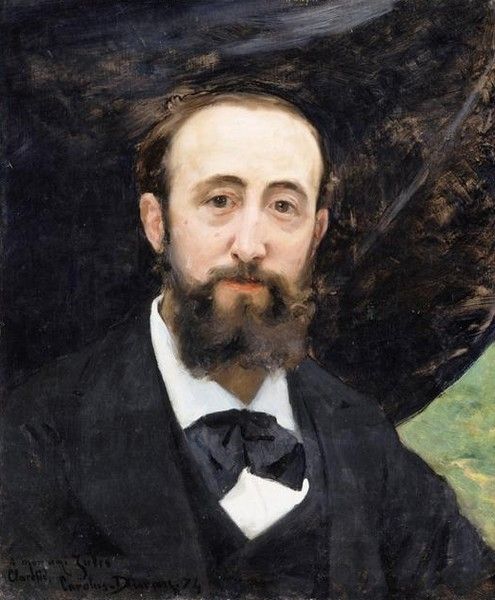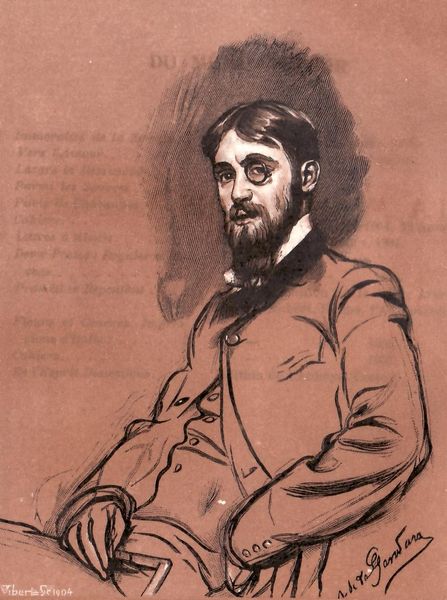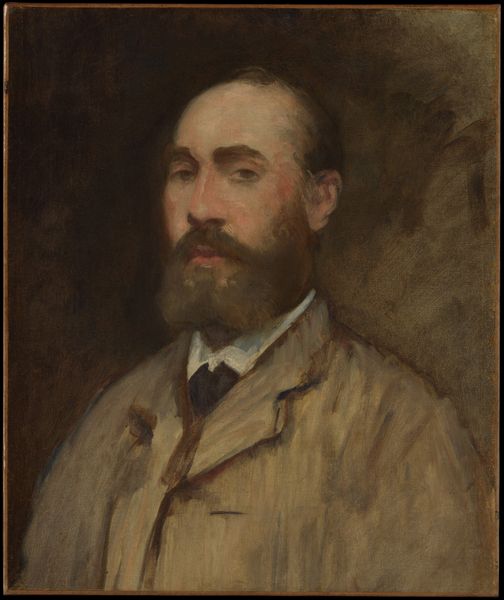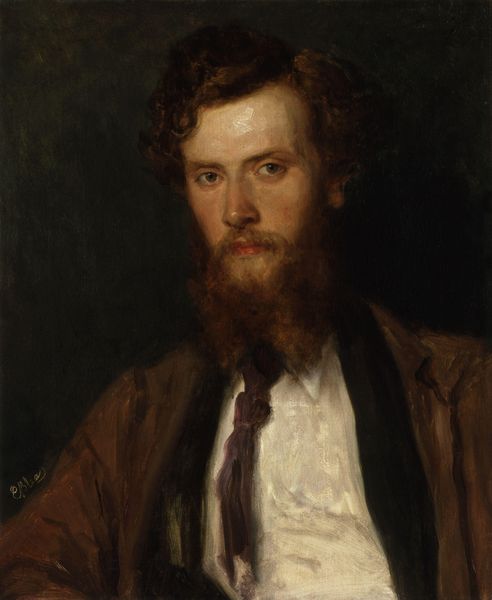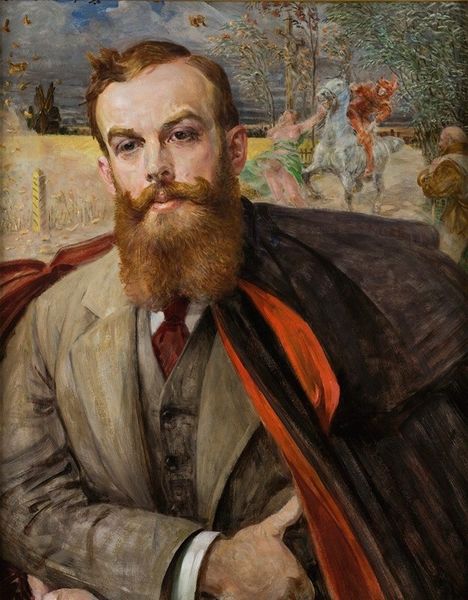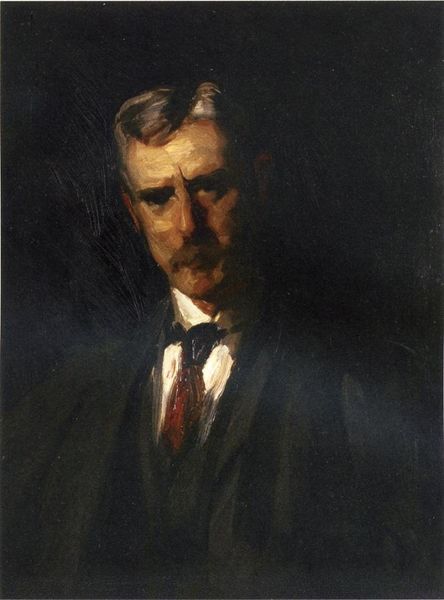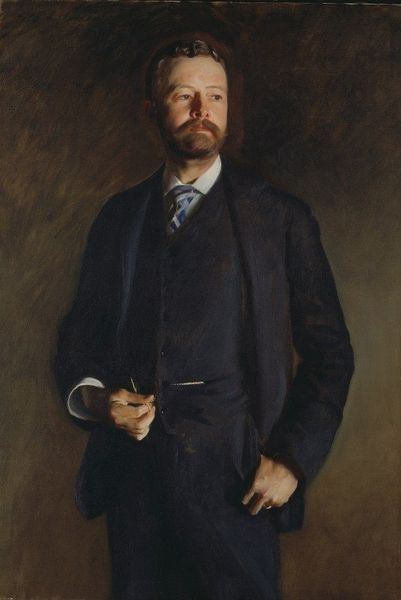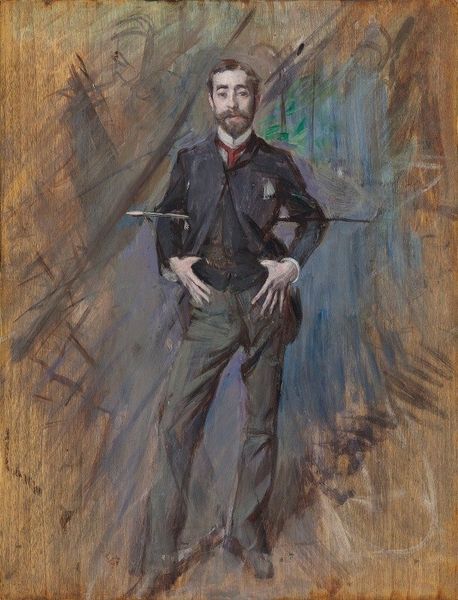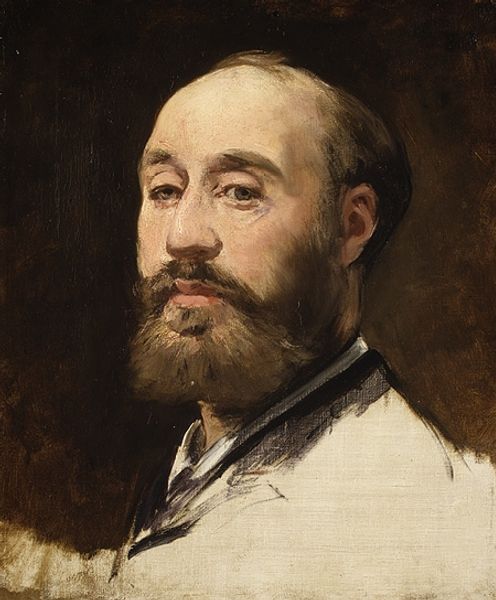
Copyright: Public Domain: Artvee
Editor: This is Giovanni Boldini's "Portrait Of The Artist Lawrence Alexander," painted in 1902 using oil paint. The portrait evokes a sense of poised masculinity, and there is almost a languid quality to the figure, a world-weariness about his gaze. What do you see in this piece? Curator: Beyond the confident pose and clear influence of Impressionism, I see a deliberate construction of identity. Consider the context: the turn of the century was a time of immense social change, particularly concerning the roles and expectations of men. This portrait, with its subject's refined attire and leisurely posture, could be interpreted as a response to anxieties surrounding shifting power dynamics, a clinging to established ideals of masculine privilege. Editor: That's interesting. So you see the painting as more than just a depiction of a man, but rather a commentary on social issues? Curator: Precisely. The artist may not have been consciously creating a radical statement, but art is always embedded within its historical and cultural moment. The subtle nuances of body language, the choice of clothing, and even the brushstrokes themselves can be read as reflecting, reinforcing, or even challenging prevailing social norms. Where does class enter this discourse, given that Alexander was a 'gentleman artist'? Editor: I suppose that affects the reading significantly; what are your thoughts? Curator: His languid pose reads in an entirely different light – one that embodies entitlement, privilege and an explicit flaunting of his place in society. How complicit might Boldini have been in creating a visual that propagates and condones the prevailing social hierarchies? And how are such systems relevant and evident in our own cultural moment? Editor: Wow, I never would have considered all of that. I see so much more in this portrait now! Thanks! Curator: It’s through these multilayered conversations and critical assessments that we really start to see artworks as vibrant cultural documents. I feel that I, too, have deepened my awareness around class and portraiture after speaking with you.
Comments
No comments
Be the first to comment and join the conversation on the ultimate creative platform.

